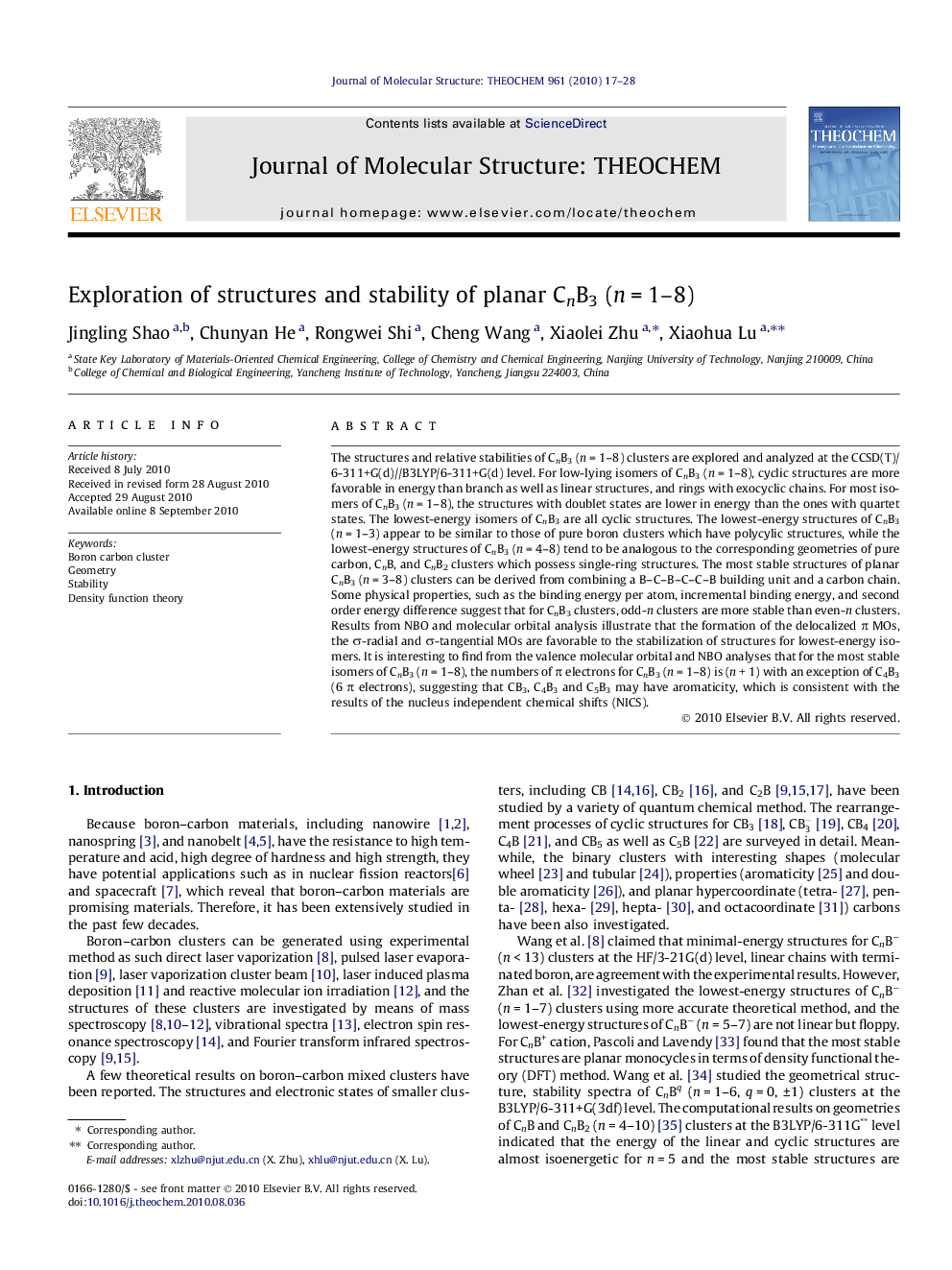| Article ID | Journal | Published Year | Pages | File Type |
|---|---|---|---|---|
| 5416282 | Journal of Molecular Structure: THEOCHEM | 2010 | 12 Pages |
The structures and relative stabilities of CnB3 (n = 1-8) clusters are explored and analyzed at the CCSD(T)/6-311+G(d)//B3LYP/6-311+G(d) level. For low-lying isomers of CnB3 (n = 1-8), cyclic structures are more favorable in energy than branch as well as linear structures, and rings with exocyclic chains. For most isomers of CnB3 (n = 1-8), the structures with doublet states are lower in energy than the ones with quartet states. The lowest-energy isomers of CnB3 are all cyclic structures. The lowest-energy structures of CnB3 (n = 1-3) appear to be similar to those of pure boron clusters which have polycylic structures, while the lowest-energy structures of CnB3 (n = 4-8) tend to be analogous to the corresponding geometries of pure carbon, CnB, and CnB2 clusters which possess single-ring structures. The most stable structures of planar CnB3 (n = 3-8) clusters can be derived from combining a B-C-B-C-C-B building unit and a carbon chain. Some physical properties, such as the binding energy per atom, incremental binding energy, and second order energy difference suggest that for CnB3 clusters, odd-n clusters are more stable than even-n clusters. Results from NBO and molecular orbital analysis illustrate that the formation of the delocalized Ï MOs, the Ï-radial and Ï-tangential MOs are favorable to the stabilization of structures for lowest-energy isomers. It is interesting to find from the valence molecular orbital and NBO analyses that for the most stable isomers of CnB3 (n = 1-8), the numbers of Ï electrons for CnB3 (n = 1-8) is (n + 1) with an exception of C4B3 (6 Ï electrons), suggesting that CB3, C4B3 and C5B3 may have aromaticity, which is consistent with the results of the nucleus independent chemical shifts (NICS).
